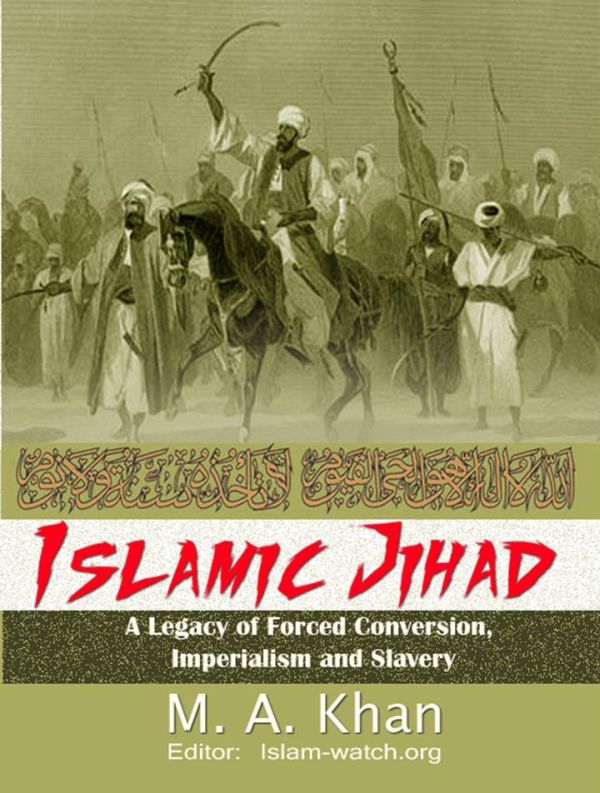The secret to the success of early Islam in Arabia in the 7th century is an “open tribe” system. I detail the basics of this concept in this article. A second article will follow on the same topic concentrating on the role of economics in this system.
Muhammad in Mecca: Muhammad started his mission quietly and peacefully although he himself was a very vindictive person - as attested by many incidents in his life that we can read about. However the start of his mission in Mecca was peaceful. The reason for that is a very natural one. He hardly had any followers. Those who followed him were mostly from lower class, some of the slaves and the poor. As his years in Mecca progressed, so did his insults to the polytheists' beliefs and practices.
Arabs before the dark age of Islam were tolerant people. This is a fact that history supports. Arabs had a multiplicity of religious beliefs that spanned a wide spectrum of monotheism and polytheism. The Arab culture was used to a multiplicity of religious practices – all of which Muhammad came to abhor. At the beginning, polytheists just did not pay much attention to Muhammad and his followers, but as Muhammad persisted in insulting their religions, they started paying him back in the same currency he dealt to them.
Annoyed and frustrated with his situation, Muhammad sought an alternative place to stay. Two groups of Muslims went to Abyssinia (Ethiopia). Muhammad himself went to neighboring Ta’ef in the year 619 AD. His rudeness showed up early on during his stay in Ta’ef. He asked the people there to leave their ancestral religion. He also wanted them to join forces with him against the Quraysh. The Ta’ef people asked him to leave, and he went back to Mecca. The only success Muhammad had during his trip to Ta’ef is that he met some Jinns on his way (Jinns are a species of spirits). Muhammad wasted no time in inviting them to Islam. The accepted immediately and became good Muslims!
The year 620 AD would prove crucial to Muhammad’s plans to achieve power and status. During the pilgrimage season to Mecca that year, Muhammad met with a group of pilgrims from Yathrib (Medina). He preached his religion to them and six of them converted and promised to be loyal to him and to preach his religion when they go back to Yathrib, which they did. Muhammad wanted to migrate to Yathrib at that time, but they discouraged him and asked him to wait a bit longer.
In the following year more Medinese people converted to Islam. Twelve of them met secretly with Muhammad during the pilgrimage season at a place called Al Aqaba. All of them pledged allegiance to his faith. Muhammad sent Mosab Bin Omayr; a Meccan convert, to guide them in their new faith. The pledge of allegiance in that meeting is known in Islamic history as the First oath of Aqaba.
Muhammad’s decision to send Mus’ab to Yathrib to preach his religion proved fruitful. During the 622 AD pilgrimage season, Mus’ab shows up in Mecca accompanied by seventy five Medinan converts (seventy three men, and two women). Again, Muhammad accompanied by his uncle Al-Abbas meets secretly with them at Aqaba. Al-Abbas addresses the Medinan crowd and tells them that although Muhammad is protected by his kinsmen and followers in Mecca, he – Muhammad – prefers to seek protection from the Medinan converts. Al-Abbas continues:
If ye be resolved and able to defend him, then give the pledge. But if you doubt your ability, at once abandon the design
Medinan converts reply they have heard what was said and ask Muhammad to choose for himself what he wishes for his Lord and what he wishes for himself. Muhammad responds with those words:
I invite your allegiance on the basis that you protect me as you would your (own) women and children
Al-Barra; a Medinan convert, takes Muhammad’s hand and says
By Him who sent you with the truth, we will protect you as we protect our women. We give our allegiance, and we are men of war possessing arms which have been passed on from father to son
This pledge is known in Islam as the second oath of Aqaba
After receiving this second oath (or pledge) guaranteeing his protection Muhammad felt reassured about his safety in Medina and as a result he undertook the "hijra" (migration) to Medina during September of 622 AD.
It is this second pledge of Medinans that created in my view the concept of an open tribe system that caused great success for Muhammad during his stay in Medina. But before I delve into that, I would ask the reader to note that Muhammad moved to Medina on his own terms. The idea that Muhammad was greatly persecuted in Mecca, and that the Meccans were after him to assassinate him just do not find any historical support. They are lies invented by Muslims. For a thorough discussion of this matter I refer the reader to M A Khan’s book on “Islamic Jihad” (Felibri, p. 12-18).
Open tribe theory
Muhammad had observed that Arabs lived in a tribal system. Animosity occurs between tribes more than individuals of different tribes. Mohammed utilized this fact to grab power and status. A tribe has one main leader. Muhammad wanted to insure a system that makes him the main leader in his "tribe" and He also wanted other benefits. His narcissistic tendencies made him view himself as as a powerful spiritual and religious leader amongst his followers. To fulfil this vision he had to establish a tribe that would not only bestow upon him the mantle of tribal leadership (thus conferring secular authority), but one that would also bestow upon him the role of 'spiritual guide' (thus conferring spiritual authority) which in turn would make him unquestioningly the leading personage in the tribe. In Arab tribal values “whatever the Sheikh (leader) of the tribe wants will come to be”.
The second oath at Aqaba granted that right of “Sheikhdom” to Muhammad. Notice that the Medinan people at Aqaba were not of Mohammed's tribe – the tribe of Quraysh. They belonged to multiplicity of tribes in Medina. However, their loyalty is now transferred to Muhammad; the new sheikh era has begun.
While in Medina, Muhammad wasted no time in establishing his tribal leadership over other tribes. He made sure that he has spiritual authority mixed with a religious aura. He was the one to judge between conflicting individuals and amongst tribes. Those who criticized him, he made sure his henchmen would go and assassinate them. Many of his assassinations were successful. The murders of Asma bint Marwan, Abu Afaq, and Sallam Ibn Abul Huqayq are some examples of his assassinations' success. Some of his assassinations failed. He failed in assassinating Abu Sufyan; a major leading figure in Quraysh. But these failures did not prevent Muhammad's use of assassination terrorizing the individuals and the tribal leaders who thought negatively of him and his religious mumbo jumbo.
To fully enable him to sate his power-grabbing appetites Muhammad needed manpower. To make the garnering of this manpower simple, Muhammad designs Islam so that the only requirement for membership of the "tribe of Islam" is the verbal expressions of the Shahada. Many men from multiplicity of tribes joined him, mostly out of greed for booty.
But no exit.
At the same time, Muhammad wanted to close the door on anyone who wanted to leave the Muslims' tribe. It was important to keep those who joined and add to them. Manpower counts when you want to grab the fortunes of larger and stronger tribes. Those who are in must be prevented from leaving. Those who want to come into Islam - the open and welcoming tribe - should be able to join very quickly. It takes seconds to say the Shahada: testifying that there is only one god, Allah, and that Muhammad is Allah’s prophet. With such a verbal expression, one gives ultimate rulership to Muhammad as a leader of the Muslim tribe. Never mind Allah. Allah is far away. Muhammad is the one who takes care of Allah’s business.
It was also of equal importance to prevent anyone from leaving the Muslim camp; hence, Muhammad established the death penalty for anyone who leaves Islam. This rule still exists today in Islamic Shari’a.
A Bukhari Hadith states in Volume 9, Book 84, Number 57:
Narrated 'Ikrima:
Some Zanadiqa (atheists) were brought to 'Ali and he burnt them. The news of this event, reached Ibn 'Abbas who said, "If I had been in his place, I would not have burnt them, as Allah's Apostle forbade it, saying, 'Do not punish anybody with Allah's punishment (fire).' I would have killed them according to the statement of Allah's Apostle, 'Whoever changed his Islamic religion, then kill him.'"
Thus, Muhammad established a tribe for himself that will take in any one, but will kill anyone who leaves it. In fact, this is Islam’s state today. For Muhammad, it was a personal psychological need as well as an economic need.
Thus Mohammed establishes the “no exit open tribe system” in which the tribe is very welcoming of those who wish to join it, but kills (or seeks to kill) those who leave. This was a radically new concept of tribalism within the Arabian Peninsula were tribes were bound together by blood and marriage relationships.
In the “new tribe” of Islam with its tribal leader “Sheikh” Muhammad, the binding factor is the new religion of Islam – a religion that Muhammad also controls. Thus Muhammad's system grants him control over both the secular and religious behaviour of the tribe of Muslims – a position of unprecedented power within the tribal systems then extant within Arabia.
In a subsequent article I shall discuss the inter-relation between Islam and the economic needs of Muhammad and his early followers. As will be shown economics was one of the main motivating factors for the Arabs living during Muhammad’s time to follow him.
---
Note: The author thanks Jon MC for valuable editing of a previous version of this article, which added clarity and strength.



Comments powered by CComment